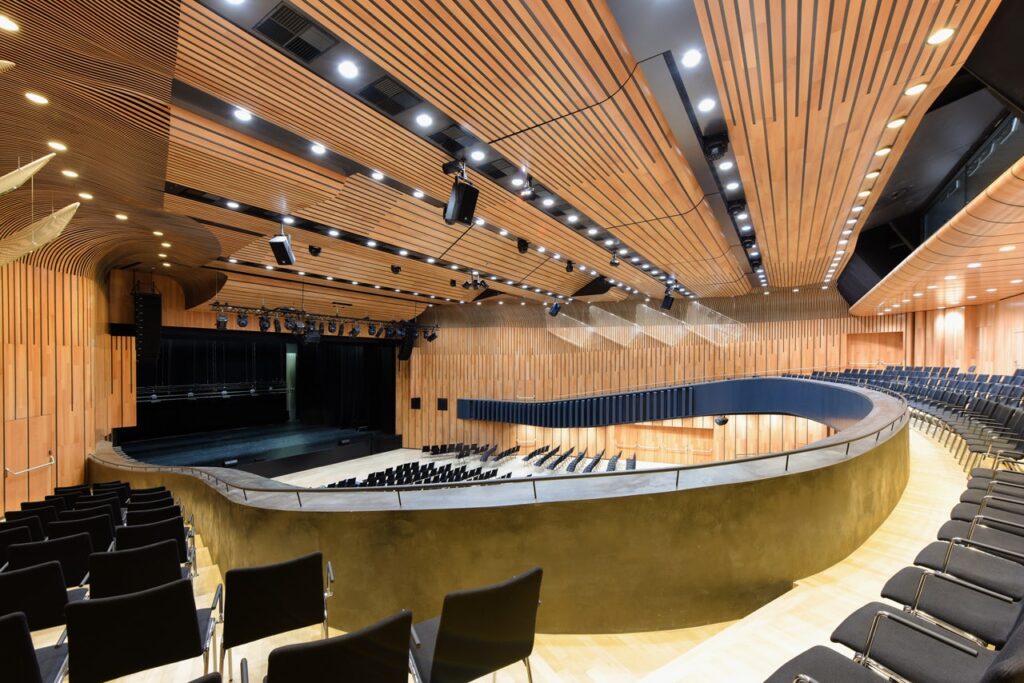Introduction:
Creating an environment where every note resonates perfectly is crucial for any music venue. Achieving optimal acoustics requires careful consideration of various factors, from the layout of the space to the materials used in construction. Musicians and audiences alike benefit when the sound is clear, balanced, and immersive, making the experience truly memorable. The quality of acoustics can either enhance or detract from a performance, which is why it is essential to get it right. This article delves into the key aspects of achieving ideal acoustics in music venues, offering insights into the practices that lead to an unparalleled auditory experience.
Sound is an integral part of the live music experience, and how it is perceived by the audience hinges on the acoustics of the venue. The design of a music venue must prioritize the control and manipulation of sound to ensure clarity and richness. This involves more than just placing speakers and amplifiers; it requires a deep understanding of how sound waves interact with different surfaces and how they travel within a space. By focusing on the acoustics from the outset, venue designers can create spaces where the music is not only heard but felt, making the performance more impactful and enjoyable for all.
Understanding the Fundamentals of Sound in Music Venues:
Sound is a complex phenomenon that behaves differently depending on the environment in which it is produced. In music venues, the way sound waves move and interact with surfaces plays a pivotal role in the overall acoustic quality. To achieve optimal acoustics, it is essential to understand how sound waves behave in enclosed spaces. This includes considering factors such as reflection, absorption, diffusion, and reverberation. Each of these elements influences the clarity and balance of sound, which are critical for ensuring that every instrument and voice can be heard distinctly.
Reflection occurs when sound waves bounce off surfaces such as walls, ceilings, and floors. If not managed properly, reflections can lead to echoes or a muddled sound, detracting from the quality of the music. On the other hand, absorption involves reducing the amount of sound that reflects by using materials that dampen or absorb the waves. Proper absorption is key to minimizing unwanted noise and enhancing the clarity of sound. Additionally, diffusion helps to scatter sound waves evenly throughout the venue, preventing areas of dead space or overly loud spots. Finally, reverberation refers to the persistence of sound in a space after the original sound is produced, which can either enhance or impair the listening experience depending on how it is controlled.
The Role of Materials and Design in Acoustics:
The choice of materials and the design of a music venue are crucial in determining its acoustic properties. Different materials have varying levels of sound absorption and reflection, which must be carefully balanced to achieve the desired acoustics. For instance, hard surfaces like concrete and glass reflect sound, potentially causing echoes, while softer materials like fabric and acoustic panels absorb sound, reducing reflections. A combination of both types of materials is often necessary to create a space where sound is both clear and balanced.
In addition to material selection, the physical design of the venue also plays a significant role in acoustics. The shape and size of the room, the placement of walls, and the ceiling height all influence how sound travels within the space. Venues with irregular shapes or varying ceiling heights can help diffuse sound more evenly, while strategic placement of sound-absorbing materials can reduce unwanted echoes and reverberation. Moreover, the design should also consider the audience’s location and how sound reaches them, ensuring that every seat in the house has a consistent and high-quality auditory experience.
The Importance of Soundproofing and Isolation:
“Soundproofing and isolation are essential components of achieving optimal acoustics in music venues. Soundproofing involves preventing external noise from entering the venue and internal sound from leaking out. This is particularly important in urban settings where outside noise, such as traffic or neighboring businesses, can interfere with the performance. Effective soundproofing requires the use of specialized materials and construction techniques that block sound waves, such as double-glazed windows, heavy doors, and insulated walls.
Isolation, on the other hand, refers to separating different parts of the venue to prevent sound from one area from bleeding into another. This is especially important in multi-purpose venues where different events may take place simultaneously. Proper isolation ensures that each performance space within the venue maintains its acoustic integrity, allowing for a controlled and immersive sound environment. Both soundproofing and isolation contribute to creating a space where the music can be experienced without distractions, ensuring that the focus remains solely on the performance.” – Jessica Shee from iboysoft.com
The Impact of Technology on Modern Acoustics:
Advancements in technology have significantly impacted how acoustics are managed in modern music venues. Digital sound systems, acoustic modeling software, and advanced materials have made it possible to fine-tune the acoustics of a space with a high degree of precision. Digital sound systems allow for real-time adjustments to be made during a performance, ensuring that the sound is consistently optimal regardless of the genre of music or the size of the audience. This flexibility is crucial in venues that host a variety of performances, from intimate acoustic sets to full-scale concerts.
Acoustic modeling software enables designers to simulate the acoustic properties of a space before it is built, allowing for potential issues to be addressed in the design phase. This technology can predict how sound will behave in different parts of the venue, helping to create a space where acoustics are optimized from the outset. Furthermore, innovations in acoustic materials have introduced new options for sound absorption and diffusion, offering greater control over the acoustic environment. These technological advancements have revolutionized the way music venues are designed and operated, ensuring that the sound quality meets the highest standards.
The Significance of Acoustic Testing in Ensuring Optimal Sound Quality:
“Acoustic testing plays a crucial role in maintaining and enhancing the sound quality within music venues. This process involves the measurement and analysis of sound within the space to detect any acoustic anomalies, such as unwanted echoes, dead spots, or excessive reverberation. Through these tests, it becomes possible to understand how sound behaves in different parts of the venue, allowing for precise adjustments to be made to the design, layout, or sound system. Whether it’s tweaking the placement of acoustic panels, adjusting the angles of reflective surfaces, or fine-tuning the sound system, these modifications ensure that every corner of the venue offers a consistent and high-quality auditory experience.
Regular acoustic testing is not only vital during the initial setup of a venue but also serves as an ongoing measure to preserve sound quality over time. As venues age or undergo renovations, the acoustic properties can change, leading to a degradation in sound quality. By periodically testing the acoustics, venue operators can proactively address any emerging issues, ensuring that the sound remains clear, balanced, and immersive. This continuous attention to acoustic testing guarantees that both performers and audiences experience the music as intended, making every performance memorable and ensuring the venue’s reputation for excellent sound quality endures.”- Adam Martin, Managing Director at Nova Acoustics
Conclusion:
Achieving optimal acoustics in music venues is a complex and multifaceted process that requires careful planning, thoughtful design, and ongoing maintenance. From understanding the fundamentals of sound to selecting the right materials and incorporating advanced technology, every aspect of the venue contributes to the overall acoustic experience. Soundproofing and isolation further enhance the quality of the sound, while regular maintenance ensures that the acoustics remain consistent over time. Ultimately, the goal is to create a space where music can be heard with clarity, balance, and richness, providing audiences with an unforgettable experience that resonates long after the performance is over.






